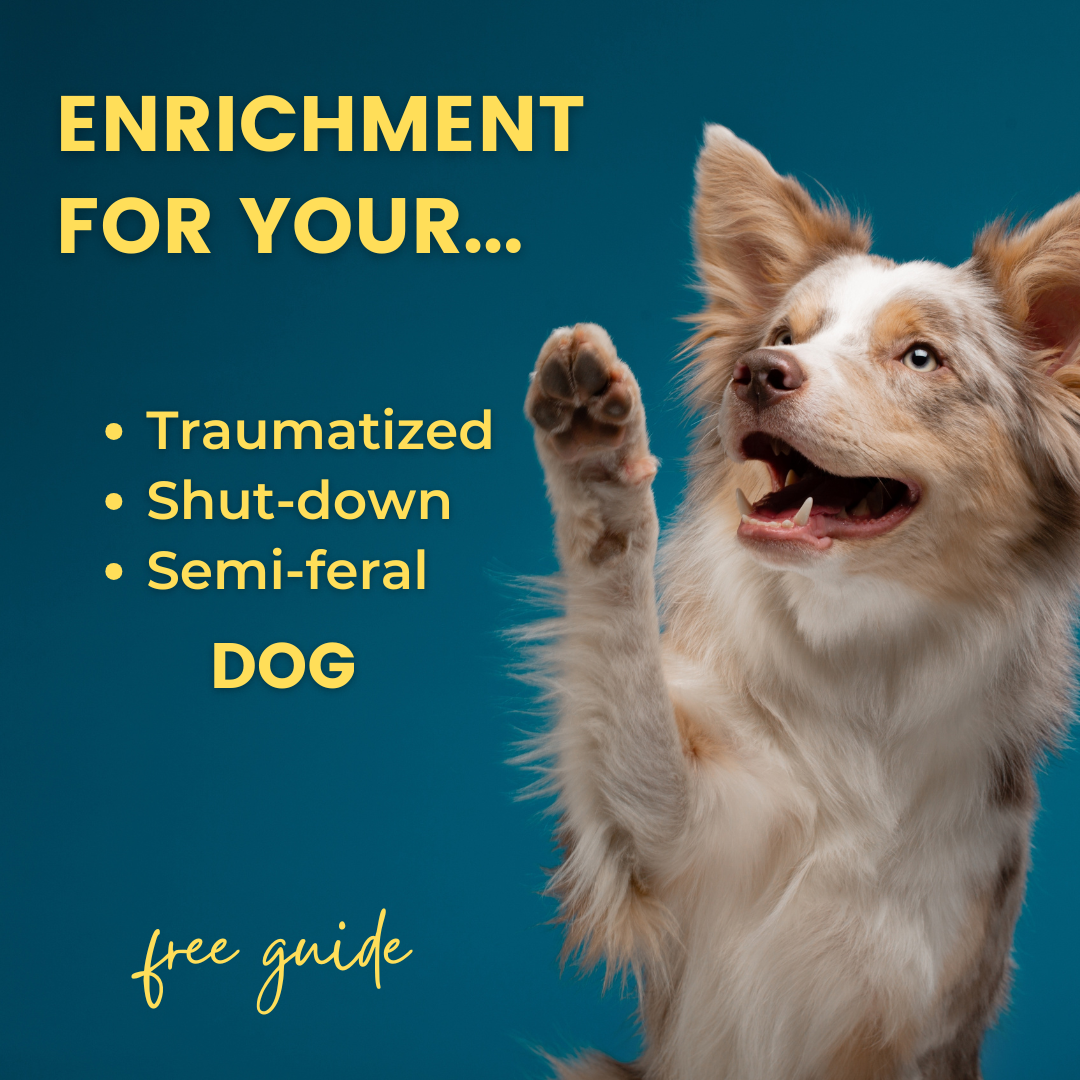Top 3 Skills for Fearful Foster Dogs
Jun 06, 2022
June is Foster a Pet month, and I'll be talking about foster dog-related topics all month. This week, I share the 3 skills I think are top priority to teach a fearful foster dog.
Why Train Foster Dogs?
Fostering involves providing a temporary home for a pet in need. If you've ever fostered a dog, you probably did so through a non-profit rescue organization, or an animal shelter. The goal of most foster programs is to provide care for the dogs (or other pets) while they wait for a family to choose to adopt them.
Two other important benefits that foster families can provide for their foster dogs are 1) to collect and provide information on the dog's behavior to potential adopters, and; 2) to teach the foster dog skills that will help them transition to a new home. This is where training comes in! Training your foster dog can increase the chances that their adoption will "stick", and could also make your life easier while you're caring for them.
What Skills Do Fearful Foster Dogs Need?
If you find yourself fostering a very fearful dog, how do you choose what to train? Well, that depends somewhat on your particular foster dog. What can they already do? What parts of their day-to-day care present problems?
While any training plan needs to be individualized for the dog and the home environment they're in, in the video I list 3 skills that I think will benefit almost any fearful foster dog, and their foster and adoptive families:
- Eat treats in your presence: We don't often think of dogs eating treats as a "skill" (if so, I'm the proud mom of 3 very skilled dogs!). But, if you've cared for very fearful dogs, you know that sometimes they are too scared to eat when people are nearby. Teaching a dog to readily eat treats in the presence of you and your family members is an important step toward being able to train other behaviors, using food.
In the video I show clips of some of the training steps we used when teaching our dog Pancake to eat with me nearby. - Follow thrown treats: Not all dogs will chase or find treats that you've thrown. This is such an important skill for fearful dogs, and using treats this way is an important skill for fosters and adopters. If your fearful foster dog will follow treats that have been thrown, they can be moved without force. That means you can show the dog's adopters how to move the dog around without dragging them on a leash, or cornering them and trying to pick them up. Think what a difference this could make to the success of the adoption! Instead of accidentally terrifying their newly adopted dog, the adopters become associated with good things.
As an added bonus, following a food lure is the first step in many other training plans. - Go to crate on cue: I chose going to crate on cue as one of my top 3 skills for fearful foster dogs because of its practical value. If you can get a dog into a crate, you can get them into the car and to the vet. You can also use the crate to move the dog around the house if that's required and the dog is too scared to move on their own. A crate allows you to separate the fearful foster dog from family members or other pets. And living in California, I can't help but think about what you would do in the event of a natural disaster, if you had to evacuate from your home and couldn't touch your foster dog. The crate could literally save the day (and the dog).
In honor of Foster a Pet Month, we're offering a 20% discount on our Scent Work class, the Reactive Dog Survival Guide course, Healthy Smiles toothbrushing course, our monthly training membership, and one-on-one initial assessments. Use the code "RESCUE20" when checking out.



